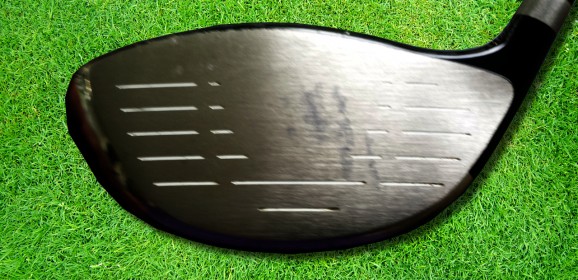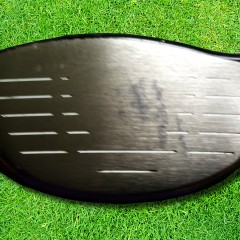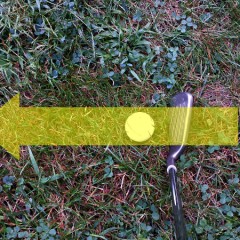Practice with a Purpose
When you go to the driving range (and you should) do you have a routine? Do you just hit the ball as far as you can? Club order This is something that works for me, try it, modify it, make it your own. When I go to the range, if I am not working on something specific, I hit my clubs in a particular order. During this routine, I pay close attention to how far each club is going. I start with my pitching wedge, it is one of the heaviest clubs in your bag. It warms you up, and gets you going. Then move to your 6 or 7 iron. Next is 3 wood or a long iron. Only then do I start hitting my driver. This club is hard to hit. I have played a few rounds where I left the driver in the bag and only hit 3 wood off the tee. While hitting the driver I don’t focus on hitting it long, I focus on not slicing. If I can hit without slicing, then I try hitting within boundaries, see below under aiming. Then I move to my wedges, I usually start with my 60 degree, just to get a feel and focus on good contact. Finish off the bucket with chipping and pitching. I happen to use my 52 degree wedge. I pick a patch of grass, or a previously hit ball as a target and try to land the ball on it. Long (50+ yards), mid (30 yards) and short chips (under 20). This drill has really helped shave a lot of strokes off my game. Distance Make mental notes or even write them down. How far on average do you hit each club? Don’t keep track of your best shots, but your average. This exercise is VERY important. You really need to know how far you hit each club, it is critical to better golf. Putt Putt or mini golf I have found that playing Putt Putt or mini golf actually helps my putting. I have often putted best after taking the kids to play miniature golf. Give it a try and have fun with the kids too! Don’t have kids? It is a great place for a date too! Aiming When at the range, don’t hit just to hit. Pick a target, pick an imaginary fairway and try to hit within these boundaries. You don’t realize how wide open a range can be. Have a vision of where you are aiming and don’t allow yourself to relax your standards. Chipping I have often gone to the range and hit an entire...
Broken Tee, course management and other ideas
Broken tees: I suppose this falls under etiquette as much as instruction, but PLEASE pick up broken tees and either move them to the side of the tee box or better yet dispose of them in the trash. Personally it distracts me when I have anything in my field of vision while teeing off. I often put at least one broken tee in my pocket for use on par 3’s or other layup holes (see course management below). You have the opportunity to put your ball on a tee and give yourself a great lie, take it! Sharpie mark: Three tips in one… You should mark you ball uniquely so you can identify it from others. There is nothing more embarrassing than picking up someone’s ball or having to confront someone that has picked up your ball. Carry a Sharpie (not a sponsor of this site…yet) and mark your ball. I tend to mark my ball with two long straight lines, these lines can be used for putting alignment once on the green. Use any mark you like but keep it unique enough to distinguish it from another if there is a question of ownership. The third tip about ball marking is when I tee it up I face the Sharpie mark where the club face will strike the ball. It will leave a mark on your club face and this way you can get an understanding on where you are striking the ball. For example, if you hit two or three drives a little too high on the face, and slightly miss the sweet spot, you may want to tee your ball lower. A few off the toe, and you may want to stand closer to the ball. Notice in the photo, I was actually hitting a little closer to the heal of the club. Course Management: Layup or punch out when the chances are slim you will “make it”. When I was just starting out golfing I almost always was shooting for the hole. I wish someone would have told me that it is OK to not “go for it” every time. I have played some of my best rounds by not trying to hit the ball over water that I am not likely to make, or punching out of trees even if I thought I might make it through a small opening. Downhill vs. uphill putts: Many new or occasional golfers may not have come across this tip before. If you are putting uphill, the ball will break less, downhill and the ball will break more. Many golfers miss on the low side, especially when hitting...
Swing Thoughts – What do you see when you are swinging?
Introducing the “yellow arrow”. Here is a tip that dropped several strokes off my round. A few years ago I noticed that my ball striking was OK, I didn’t lift my head up (to be covered soon) and I made solid contact with the ball. I was very inconsistent in the ball direction. I was aiming my feet, shoulders and rest of my body correctly, but the ball would go a little left, or a little right of where I was aiming. Nothing drastic, but just not consistent. Here is what I found, while I was aiming my body, I wasn’t aiming the ball. Besides finding a repeatable pre-shot routine, I developed an imaginary yellow arrow that helps me understand what the club will be doing at and after impact. Prior to using this technique, I realized that I was going to hit the ball, but after that I really didn’t know what was going on. By envisioning this yellow arrow as my club head path, it creates a direction for the ball to follow. You will still hit the ball, but by imagining the club head continuing down this path you will tend to hit the ball more down the intended target line. This graphic is mainly for iron shots. In another post I will bring back the yellow arrow and discuss my swing for a drive. ...





